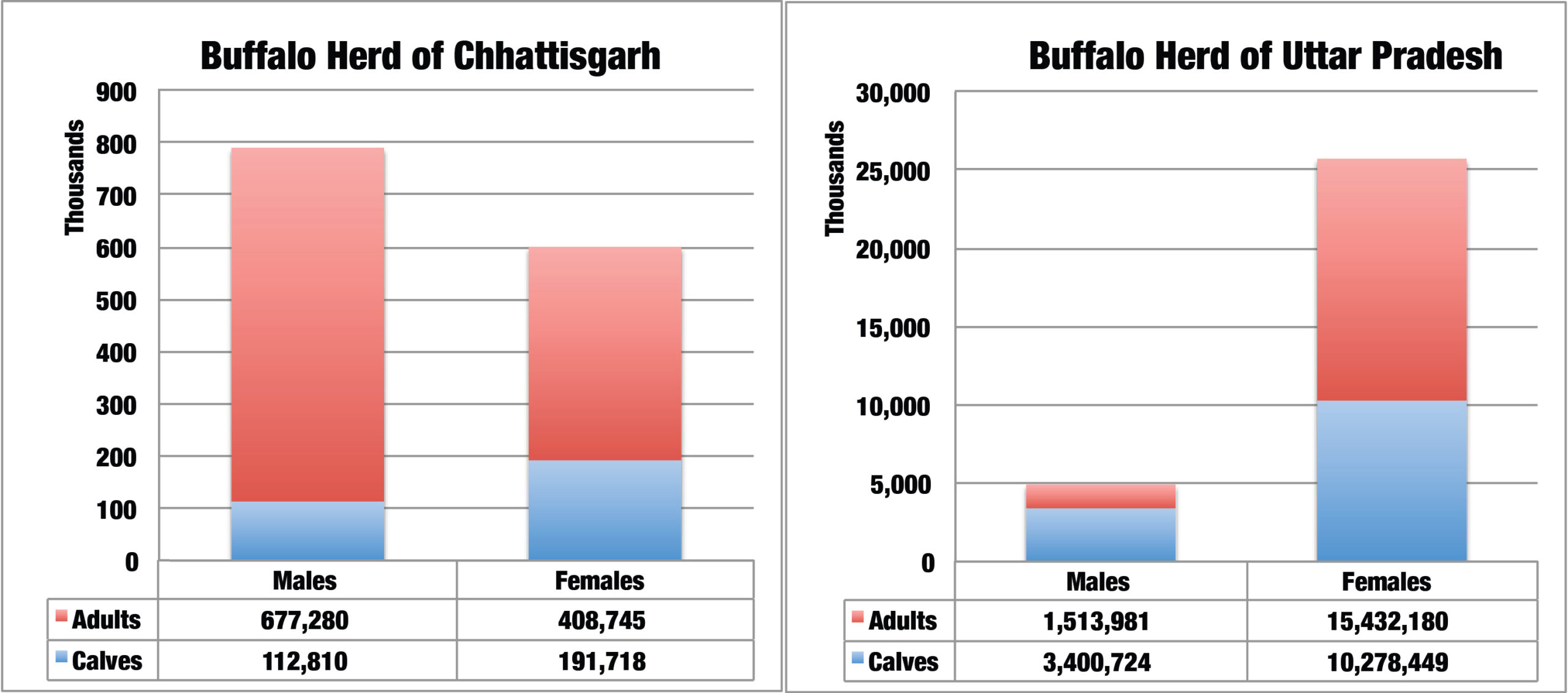Chhattisgarh is able to save all its buffaloes including males, females and the young calves and it has a law to ensure that. There is an entrenched liberal view that legal bans on slaughter (or even alcohol) fail to achieve the intended purpose and only push the slaughter (and drinking) underground. The relative composition of the buffalo herd in Chhattisgarh and Uttar Pradesh, shown in the Figure here, shows how efficacious properly drafted and diligently implemented laws can be. Chhattisgarh has an Agricultural Cattle Preservation Act (Act 28 of 2006) that imposes a complete ban on the killing of all agricultural animals including cows, bullocks, bulls and male and female buffaloes of all ages. It also prohibits the sale and transport of agricultural animals for the purpose of slaughter or with the knowledge that it is likely to be so slaughtered. The Uttar Pradesh Prevention of Cow Slaughter Act (1955), however, restricts the ban to only cows and is full of loopholes that seem to be intentionally inserted in the law. The consequences of the two differing Acts are that in UP almost all male buffaloes get slaughtered by the age of two or shortly afterwards. In Chhattisgarh, nearly all male calves survive to generate healthy cohorts of adult males. In UP, there are only 19 males per hundred males; in Chhattisgarh, there are 131 males for 100 females. Part of the reason for the healthy male-female and calves-adults ratios of the buffalo herd of Chhattisgarh is that male buffaloes and bullocks work in unison in the paddy fields of Chhattisgarh and its neighborhood (The picture here is from the Paddy fields of Sidhi). But the law prohibiting the slaughter of buffaloes and the Chief Minister’s often stated commitment to the cause have obviously played a role in saving the buffaloes and their calves in that State. It is time that Uttar Pradesh considers following the example of Chhattisgarh. Uttar Pradesh now has a Chief Minister who is deeply committed to the protection of agricultural animals. It should also have a law to reflect that commitment.
Indian Buffalo Meat Facts XII





